Until this past October, the summer of 1996 marked my last African safari, and then all of the forays into the wild spaces unfolded in the countries of Kenya and Tanzania. This latest safari adventure takes place over 25 years later, first of all, and, second of all, in two distinctly different African countries than before: South Africa and Botswana. (We engaged in some animal viewing in Zimbabwe, too, while on a cruise on the Zambezi River and also from our accommodation's balconies--our own room and various public areas--that overlooked a primary watering hole. Also on the grounds themselves. But Pam and I did not do an official venture into the wild on a safari vehicle while in Zimbabwe.) Some things were similar and some things were quite different. Exactly what are consequences of the passage of time with humans and environment and what are manifestations of different national "style," I cannot distinguish.
Nevertheless, the distinct landscape of each location we visited and the point of time in the seasonal weather cycle certainly designed singular backdrops. Here is a glimpse of the lay of the land in Hluhluwe Game Reserve, South Africa:
And here we are in the safari vehicle--still minus two passengers--preparing to embark on the excursion:
And did I mention that this particular outing now ranks as the coldest safari jaunt in my history of safari jaunts?! Do consider this photo of Pam, one taken fairly soon after we began our game drive in earnest:

Kruger National Park, South Africa, became our second safari destination. One of the largest game reserves in all of Africa, it covers over 7500 square miles. We spent only one day there in the section around the Kruger Gate, one of nine main gates. We also arrived at the very end of the dry season. In fact, there were a few rain sprinkles in the vicinity during our visit, perhaps a prescient announcement of the coming rains.
Our final safari rambles ensued in Chobe National Park, Botswana. About 4500 square miles, Chobe is the most biologically diverse park in Botswana and has one of the greatest concentrations of animals in all of Africa. We explored in safari vehicles an area fronting the Chobe River and also in boats on the Chobe River itself, a major watering spot for animals during the dry season. And the dry season it was here, too, the end of it, just at the intersection of change toward the wet season.
Fisherman on the Namibia side of the Chobe River.
View of the Chobe River from the balcony of our room at the lodge located in the town of Kasane.
Sunset on the Chobe River at the end of our first river cruise.
By the time we finished Hluhluwe and Kruger, we had already spotted and observed all of The BIG FIVE: rhinoceros, elephant, lion, leopard, and African/Cape buffalo. In the past, trophy hunters considered these animals dangerous to hunt on foot and, hence, desired them for trophies. (See APPENDIX information at the end of this post for more details on these five animals.) All in all, we saw an abundance of other wildlife as well to include a wide variety of birds and antelope, giraffes, zebras, a cheetah, crocodiles, hippos, warthogs, hyenas, wild dogs, monitor lizards, and monkeys. Chobe proved to be a treasure trove for additional sightings of most of these animals, especially elephants, lions, crocs, Cape buffalo, and hippos.
One thought that continued to surface as we observed animals in their own habitat is how supremely effective their coloring can be for camouflage. Take a look at these zebra and giraffe photos:
Hluhluwe zebras:
Kruger zebras:
And zebras crossing the road in Kruger:
Giraffes (All except the last photo are from Kruger.)
Lions! We saw our first ones in Kruger from a distance but experienced closer encounters in Chobe.
Although we were close, she didn't give us any time of her day; she was only interested in the ramblings of a warthog just beyond us.
From a boat on the Chobe River, Pam and I watched this scene play out on the bluff above. There were 4 or 5 lionesses hunting together, and the shrieks and scramblings of baboons and other monkeys and the scattering of antelope in addition to the lions on prowl were something to behold.
Hippos! (They are among the most aggressive and dangerous of all mammals, by the way.)
Hippos usually graze on land at night, but in Chobe they compete with Cape buffalo and elephants for feed on the grassy flood plain, so they have adapted.
We saw our cheetah in Hluhluwe:
And our leopard in Kruger. (Warning: These photos show a leopard fully involved in the circle of life; he is in the act of devouring an antelope, probably an impala.)
Cape buffalo--and we saw them in all of the reserves and also crossing a road in Zimbabwe.
Crocodiles!
Pam insisted that I had to sit closest to the beast if this photo was to be taken.
A few of the antelope we witnessed:
Female kudu above and males below. Full disclaimer: I supped on roast kudu twice on the trip. Quite tasty, actually.
Warthogs
Mama and her babies crossing the road in Kasane, Botswana.
I only observed rhinos in Hluhluwe, and all of them were rather far away except for the two babies we saw at the rhino sanctuary. Kruger has one of the larger populations of rhino, but we didn't see any there. So here is the only photo of a rhino. (And that's a shame! Because we certainly saw more.)
The legs of this species of bird become white because of their own poop.
Weaver bird hiding among the reeds and its nest.
Wild dogs. Apparently, they are rare and rarely seen. We found these in Kruger, mostly snoozing away their morning after a night of hunting.
Monkeys, some of which are baboons.
This monkey peered down at us on our balcony from the balcony of the room above us.
And oh, so many elephants! HOORAY for lots of elephants!
On the Chobe River, our boat captain/guide wanted to shoot this particular photo of me with the elephants. (This is the same captain/guide that suggested and shot the photo of Pam, me, and the crocodile!)

So much of the safari afterglow carries a radiance of beauty, reverence, and joy, but it also holds an afterimage of urgency, motive to act: How does humanity become a better steward of this planet and ALL its living things? And how does humanity do it in time to benefit all?
APPENDIX
TEN facts about the BIG Five you can use to impress:
10) Buffalo’s primary predator is the lion. Buffalo will try to rescue another member who has been caught. They have been observed killing a lion after it has killed a member of the group.
9) Leopards are excellent at climbing trees. They’ll often safeguard their kill in a tree to prevent lions and hyenas from stealing it. They are also strong swimmers and occasionally eat fish and crabs.
8 ) African elephants communicate across large distances at a low frequency that cannot be heard by humans.
7) Rhinos have poor vision and will sometimes attack trees and rocks by accident. However, their hearing and sense of smell are excellent, thus often making up for their poor eyesight.
6) The African buffalo is not believed to be closely related to the water buffalo even though they superficially resemble each other. And unlike the water buffalo, the dangerous African buffalo has never been domesticated.
5) The rhino is the most endangered species of the Big Five. Rhino poaching worldwide hit a 15-year high in 2009. The illegal trade is being driven by an Asian demand for horns, made worse by increasingly sophisticated poachers who are now using veterinary drugs, poison, cross bows and high caliber weapons to kill rhinos. Very few rhinos now survive outside national parks and reserves.
4) Typically, the darker a lion’s mane, the older he is.
3) The leopard is nocturnal, solitary and secretive, staying hidden during the day. They are the least seen of the Big Five.
2) Many plant species have evolved seeds that are dependent on passing through an elephant's digestive tract before they can germinate. At least one third of tree species in West African forests rely on elephants in this way for dissemination.
1) White rhinos aren’t white, but slate gray to yellowish brown in color. The species name actually takes its root from Dutch, "weit" (wide), in reference to the animal's wide muzzle.
From World Wildlife Fun Good Nature Travel





































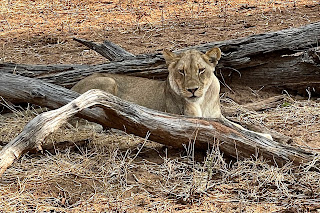








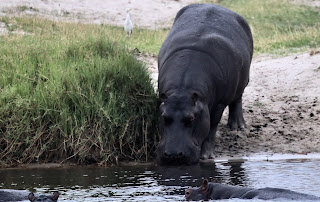








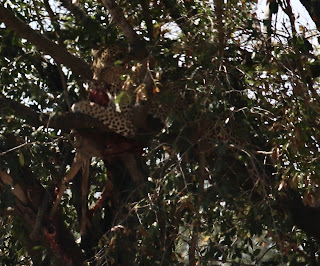









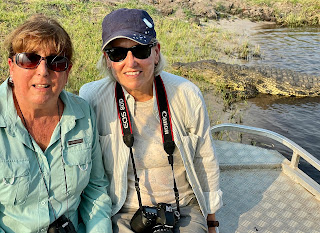


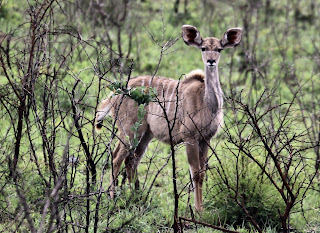






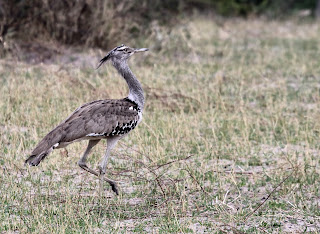


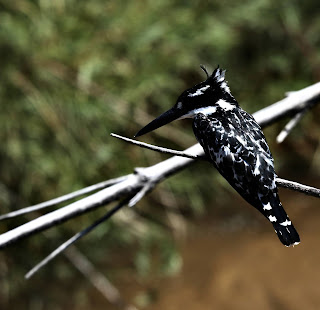










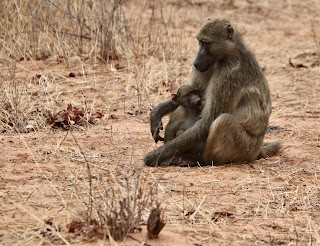






















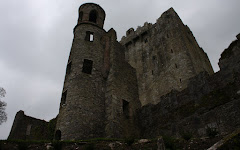














No comments:
Post a Comment